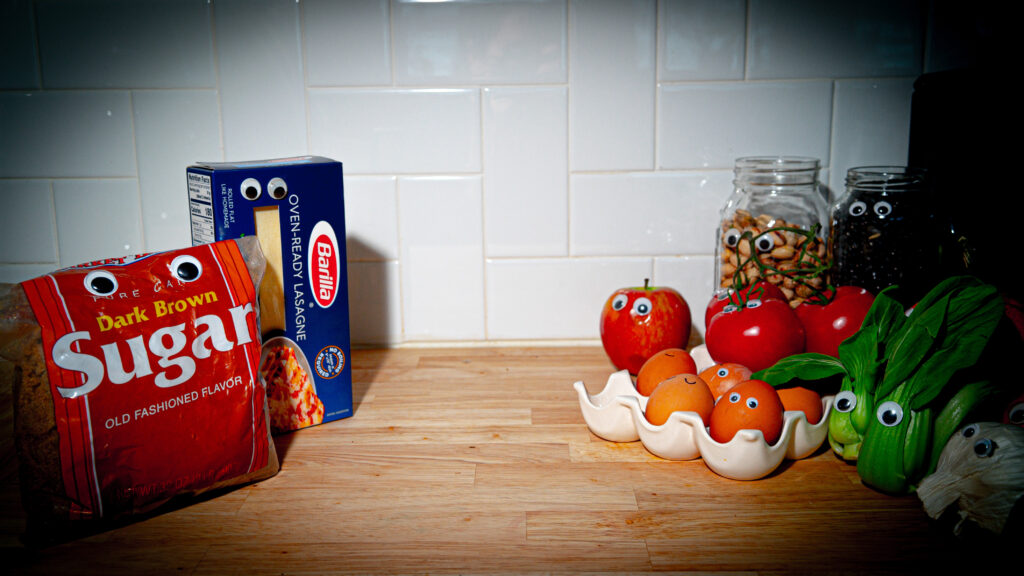WASHINGTON — General Mills, Kellogg’s, and the rest of the country’s cereal makers are mad at the FDA. So are the packaged food companies, the pasta industry, and the pickle lobby (yes, it exists).
The companies behind America’s favorite culinary indulgences are worried their products wouldn’t be considered “healthy” under a recent Food and Drug Administration proposal — and they’re urging regulators to reconsider.
SNAC International, which represents companies like chip makers Frito-Lay and Utz, say the FDA’s restrictions around added sugars and salt are too restrictive.
advertisement
Barilla and De Cecco and the other brands represented by the National Pasta Association, meanwhile, argue that noodles are healthy because pasta eaters often have higher-quality diets, and eat more vegetables. (It funded the peer-reviewed study that backs up that claim.)
Pickle Packers International says pickles won’t be considered healthy under the FDA’s rules because they’re too salty – even though “pickles have a role to play in a healthy diet because they are predominantly comprised of vegetables and serve as a delicious condiment to other nutrient-dense foods.”
advertisement
Even the maker of the frozen-aisle favorite, Healthy Choice, says it couldn’t follow the FDA’s new guidelines “without alienating consumers.”
“If the food does not taste good, people will not buy it, and Healthy Choice® — and the health benefits it has conferred for over 30 years — may disappear from the market,” wrote Conagra, the food giant behind the brand.
The FDA put out the guidelines at issue back in September, arguing that to be marketed as “healthy,” foods would have to include a certain amount of key nutritious ingredients, like fruits and vegetables, and have little added sugar, sodium, and saturated fat. The agency’s proposal would not ban unhealthy foods; those that don’t meet the FDA’s standard simply couldn’t be labeled as healthy.
The backlash could have a real impact on the FDA’s push to update food labels.
The Consumer Brands Association, which represents packaged food corporations like Hostess, Mondelēz, General Mills, and both Pepsi and Coca-Cola, is so upset by the FDA’s proposal that it is implying it may sue. In a lengthy, 54-page comment, the group says that the regulation infringes on food companies’ First Amendment rights.
“Manufacturers have the right to label foods that are objectively ‘healthy’ as such, based on a definition of ‘healthy’ that is truthful, factual, and non-controversial,” the group wrote. “We are concerned that limiting the truthful and non-misleading use of the word ‘healthy’ in product labeling could harm both the consumer and the manufacturer.”
It’s unclear whether the Consumer Brands Association or its members will actually bring a lawsuit if the regulation is finalized. A spokeswoman for the group told STAT that its comments were not meant to imply the group would sue but to raise “concerns that the FDA’s proposal is riddled legal vulnerabilities.”
The Consumer Brands Association has pitched its own alternative framework that would make it easier for foods to qualify as healthy. Foods high in nutrients like fiber and potassium, for example, could qualify under CBA’s proposal, even if they don’t include a meaningful amount of healthy foods, like fruits and vegetables.
The swift backlash from the food industry is a clear exemplification of the challenges the FDA has faced trying to more closely regulate nutrition in the United States. It took the FDA nearly six years to come up with its proposed “healthy” guidelines. All the while, other nations have set much more stringent restrictions on unhealthy foods. Countries like Mexico, Chile, and Israel, for example, require food makers to include large warnings on the front of their packages when they contain excess sodium, fat, or sugar. (The FDA announced in January that it was studying how to implement a similar warning, more than a decade after Congress directed the federal government to consider the idea.)
“It’s baffling to see the amount of pushback,” said Eva Greenthal, a senior policy scientist at the Center for Science in the Public Interest. “The FDA has its work cut out for [it], but the agency just has to focus on its mission to protect public health and resist pressure from industry, whose only mission is to profit even at the cost of our health.”
Federal regulators did set a high bar for a food to be labeled healthy. A frozen Salmon meal with green beans and rice can’t have more than 2.5 grams per serving of added sugar, more than 690 milligrams of sodium, and more than 4 grams of saturated fat to be considered healthy, according to FDA’s website. (Healthy Choice’s Barbecue Seasoned Steak Dinner has 16 grams of added sugar, though it meets the FDA’s criteria for both sodium and saturated fat.)
Even backers of more stringent nutrition policies acknowledge that most foods Americans eat won’t be able to bear the label.
“Hardly anything would qualify, so of course food manufacturers don’t like the idea,” said Marion Nestle, an emeritus professor of nutrition and public health at New York University, who added the FDA’s regulation “automatically excludes the vast majority of heavily processed foods in supermarkets, as well as a lot of plant-based meat, eggs, and dairy products,” from bearing the healthy claim.
But the FDA’s proposal got overwhelmingly positive remarks from nutrition experts, who say it is a significant advance from the FDA’s previous rules governing healthy foods, which were finalized in the 1990s. The proposal was supported by the American Society for Nutrition, the Association of State Public Health Nutritionists, and the Robert Wood Johnson Foundation. In fact, many of those groups are asking the FDA to go further, noting that some of the FDA’s rules could be gamed to allow unhealthy foods to still bear the healthy label.
The FDA’s added-sugar requirement is probably the most controversial among food makers.
The National Confectioners Association, which represents Hershey’s, Haribo, and Tootsie Roll, told the agency to loosen the sugar proposal, and instead to “meet people where they are.” (The group’s spokesman insists it does not have a problem with the FDA’s proposal overall.)
Under the proposal, grains and dairy products can only have 2.5 grams of added sugar per serving. Other products, like fruits, vegetables, meats, nuts, and eggs can’t have any added sugar at all. That requirement would prevent a number of foods Americans have come to know as healthy, like Raisin Bran cereal, from bearing the healthy label.
Kind, the granola bar company, which first petitioned the FDA in 2015 to revise its definition of healthy, is raising concerns with the agency’s approach toward sugar, too. While the FDA granted Kind’s main request — ensuring nuts wouldn’t count against the amount of saturated fat allowed in a healthy food — the company also has problems with the agency’s strict added sugar rules.
Yogurt maker Chobani raised similar concerns, noting that “reducing sugars to the level proposed by FDA for the ‘healthy’ claim would result in significant, deleterious effects to product quality, taste, and texture.”
Some of the backlash is to be expected: The FDA’s previous rules around healthy labeling placed similar limits on saturated fats and salts, but did not include any limits on allowable added sugar.
The Consumer Brands Association even argues that the FDA may not have the legal authority to set such a strict limit on added sugar “given the lack of scientific consensus on the relationship between sugar intake and diet-related disease.” (The group does not provide substantiation for that claim.)
The American Heart Association, by contrast, applauded the sugar limits, noting, “Added sugars are a significant source of excess calories and are associated with greater overall calorie intake and higher body weight [and are] also linked to several metabolic abnormalities, a shortfall of essential nutrients, and increased risk of high blood pressure, high cholesterol, diabetes, and inflammation in the body.”
STAT’s coverage of the commercial determinants of health is supported by a grant from Bloomberg Philanthropies. Our financial supporters are not involved in any decisions about our journalism.


